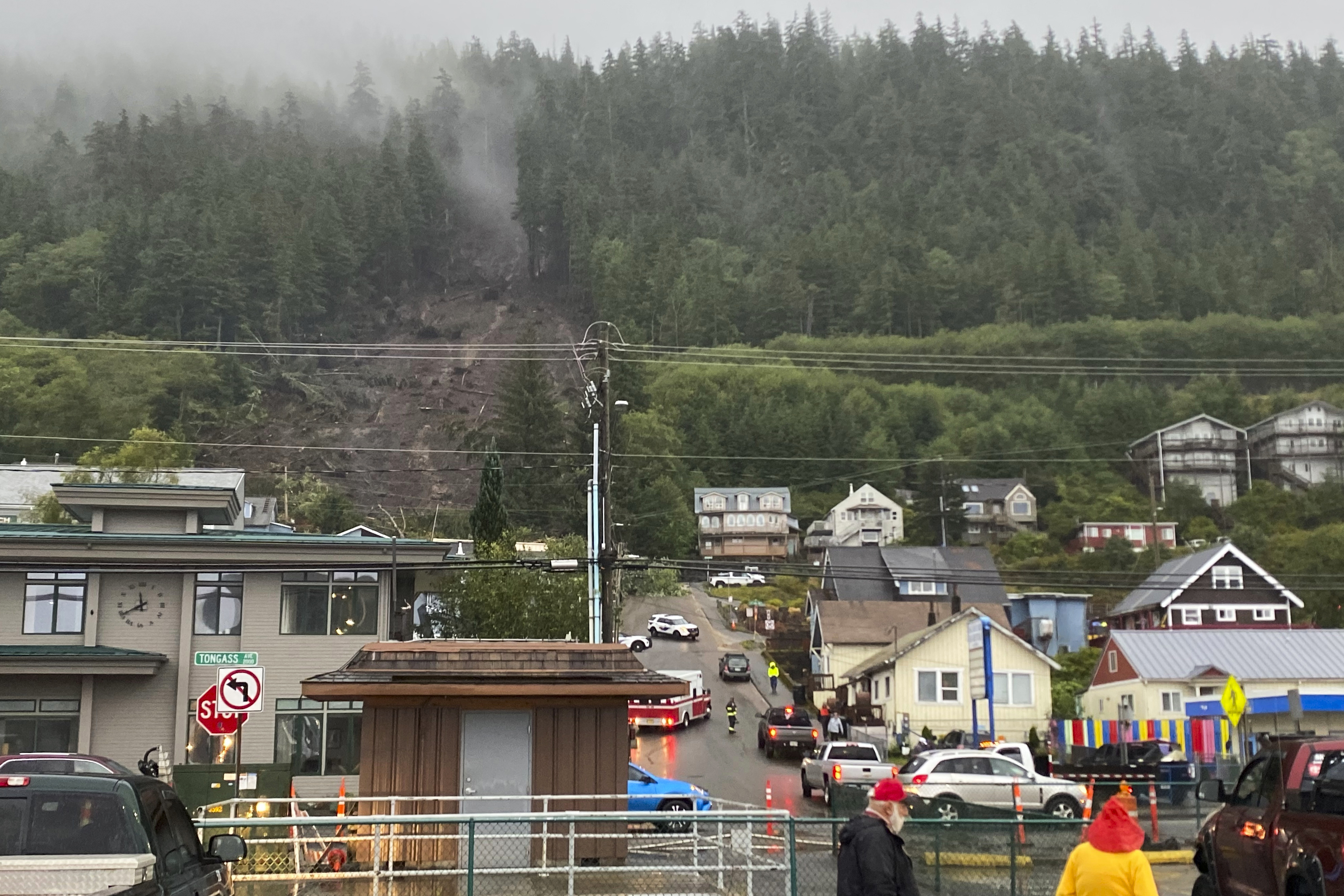A significant landslide struck Ketchikan, Alaska, on Sunday, resulting in one fatality and injuries to three others. In response, the governor and local officials promptly declared a state of emergency.
The landslide was triggered by a heavy rain front sweeping through the region, raising concerns about possible further slides. As a precaution, residents were evacuated from 3rd Avenue, 2nd Avenue, 1st Avenue, and White Cliff Avenue.

The Ketchikan Gateway Borough and City of Ketchikan reported damage to both homes and infrastructure, with two individuals hospitalized; one has since been treated and released. Thankfully, all others involved have been accounted for.
Authorities identified a potential secondary landslide zone south of the original site, with crews on standby. There were also reports of mud causing sinkholes around the area.
Power disruptions occurred, but many areas had their electricity restored by 8:15 p.m. However, some regions remain without power as response efforts continue.
Governor Mike Dunleavy issued a disaster declaration and stated that state agencies would provide necessary support. “My thoughts and prayers are with the residents of Ketchikan tonight,” he shared on X (formerly Twitter).
Both Borough Mayor Rodney Dial and City Mayor Dave Kiffer expressed their condolences and concern over the situation. Kiffer noted he had never witnessed a landslide of such severity in his 65 years in Ketchikan.
On Monday, specialists from the Department of Homeland Security and Emergency Management, along with staff from the federal Department of Transportation, will be heading to Ketchikan for further assistance. The State Emergency Operations Center is also providing support.
Ketchikan High School has been designated as an emergency shelter, equipped with essentials for affected residents. Meanwhile, local schools will be closed on Monday.
The National Weather Service predicts heavy rain again later in the week, potentially exacerbating the situation in the area. Ketchikan, home to about 8,000 residents, is Alaska’s southernmost major community.
Last week, the nearby Yup’ik village of Napakiak faced significant flooding, with water levels rising over three feet, trapping residents despite their homes being elevated.
In another part of the state, a home was lost to floodwaters caused by a glacier lake outburst.
